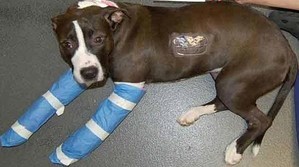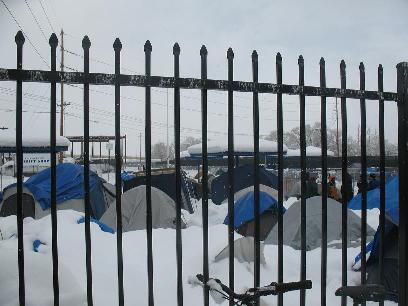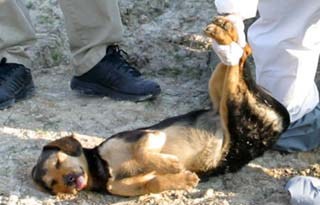It Was the Best of Times, It Was the Worst of Times
January 1, 2011 by Nathan J. Winograd
Part I: The Year in Review
“No army can stop an idea whose time has come”
Power to the People. That is the how 2010 can be summed up. We did not have the ASPCA’s $130 million in revenues. We did not have HSUS’ $110 million budget. We did not open a New York City fundraising office and take in over $40 million like Best Friends did. And we did not have the $300 million in assets that Maddie’s Fund does. But we, the people, accomplished something that they did not in 2010 and, in fact, have never done. We achieved success. We created No Kill communities.
We achieved a No Kill community in Marquette, Michigan. We achieved a No Kill community in Hastings, Minnesota. We achieved a No Kill community in Prescott, Wisconsin. We achieved a 91% save rate in Reno, Nevada despite the highest unemployment rate in the nation. We reduced the killing by over 70% in Georgetown and Wilmington, Delaware. And we repeated the No Kill achievement in many communities, such as those in Kentucky and Virginia. And that is not all.
We got New Zealand to embrace the No Kill Equation. We successfully passed shelter reform legislation in the State of Delaware. We not only ousted a draconian director responsible for killing over 100,000 animals, we stewarded the unanimous passage of a No Kill ordinance in Austin. And more.
We did those things. Us. Everyday animal lovers lacking big dollars and the support of big organizations. We did those things in spite of opposition from the ASPCA and HSUS. And we did it without any of the large, well-funded national groups that have the hubris to proclaim they are the voice of the movement, that they lead us. Even as they fail while we succeed. And even as they hoard their millions, while we fight for the animals at often great personal cost.
Despite the tremendous success of last year, 2010 was also the year of staggering betrayals. It was the year HSUS completely embraced Michael Vick, the most notorious dog abuser of our generation, and sabotaged No Kill in San Francisco. It was the year Best Friends showed itself willing to sacrifice 25,000 animals a year and the trust of the rescue community for money. It was the year Alley Cat Allies refused to support a bill that would have saved the lives of countless feral cats and kittens in NYS shelters in deference to a friendship with one of the legislation’s chief opponents. It was the year that Maddie’s Fund continued to parrot the fiction that New York City was a national model even as rampant neglect, cruelty, and illegal conduct in the city shelter dominated headlines and the suffering animals there cried out for a champion.
When the animals needed them, the people—the grassroots—came through. And tragically, yet again, the large moneyed organizations did not. In the process, we learned who our real friends were—which groups the animals could truly count on to champion their best interests—and which groups were willing to sell those animals out for more pedestrian interests: money (as in the case of Best Friends), cowardice (as in the case of Alley Cat Allies), heartless uncaring (as in the case of HSUS and the ASPCA), and allegiance to the disproven antiquated notion that community collaborations hold the key to success even as existing success by others born of standing up to those who defend the status quo and their own lack of success despite ten years and $100,000,000 prove them unequivocally wrong (as in the case of Maddie’s Fund).
Although no gain could justify the betrayal, the cruelty, and the killing which the animals suffered, there was a silver lining. After years of trying to reform the large national organizations, we learned we can achieve success without them. We also learned who the real leaders are: You. Me. Us. And this has strengthened and emboldened our resolve. Because rather than show allegiance to organizations, even when those organizations betray their mission (and the animals in the process), we fully rejected old dogmas that once defined the paradigm under which we all operated. We held accountable those individuals and organizations which claim to represent the interests of animals but who, in reality, have very different motives and allegiances. We fully and unequivocally rejected their excuses. And we fully accepted—though not always without heartbreak—the bitter reality that many of the emperors in the humane movement have no clothes.
Here is a month by month look at the highlights and lowlights of a heartbreaking but also incredible year.
 January Lowlight: After killing Oreo, an abused dog, Ed Sayres made it his personal mission to kill Oreo’s Law which would have saved 25,000 animals per year needlessly killed in NYS shelters while the rescue groups willing to save them are turned away. The fight to save those animals would dominate much of the year and definitively show that the large national groups cannot be counted on to stand up for the animals.
January Lowlight: After killing Oreo, an abused dog, Ed Sayres made it his personal mission to kill Oreo’s Law which would have saved 25,000 animals per year needlessly killed in NYS shelters while the rescue groups willing to save them are turned away. The fight to save those animals would dominate much of the year and definitively show that the large national groups cannot be counted on to stand up for the animals.February Highlight: After an expose showed that a West Hollywood pet store was getting their dogs from puppy mills and then lying to the public about the source, the City of West Hollywood, CA voted to ban their sale. There is an exception for animals from rescue groups and shelters to encourage greater cooperation between public and private, the kinds of relationships that have saved countless animals in other communities.
February Highlight: The economy continues its tumble in Reno, Nevada with foreclosures reaching all-time highs and unemployment among the top in the nation. As tent cities begin dotting the landscape, the Nevada Humane Society steps in to provide food and medical care for tent city pets, showing why Reno leads the pack and the kind of compassion and “can do” attitude that allows it to finish the year with a 91% rate of lifesaving despite a per capita intake seven times the rate of New York City.
top in the nation. As tent cities begin dotting the landscape, the Nevada Humane Society steps in to provide food and medical care for tent city pets, showing why Reno leads the pack and the kind of compassion and “can do” attitude that allows it to finish the year with a 91% rate of lifesaving despite a per capita intake seven times the rate of New York City.
 top in the nation. As tent cities begin dotting the landscape, the Nevada Humane Society steps in to provide food and medical care for tent city pets, showing why Reno leads the pack and the kind of compassion and “can do” attitude that allows it to finish the year with a 91% rate of lifesaving despite a per capita intake seven times the rate of New York City.
top in the nation. As tent cities begin dotting the landscape, the Nevada Humane Society steps in to provide food and medical care for tent city pets, showing why Reno leads the pack and the kind of compassion and “can do” attitude that allows it to finish the year with a 91% rate of lifesaving despite a per capita intake seven times the rate of New York City.March Highlight: The Delaware SPCA, which runs two animal control shelters in Delaware announces that killing has been reduced by 70% since new leadership took over and began implementing the programs and services of the No Kill Equation. The save rate hits 80% after the new Director oversees an 80% turnover in staff.
March Highlight: Austin, Texas No Kill advocates fight one of the most ruthless and draconian shelter directors in the nation, a person who presided over the deaths of over 100,000 animals during her tenure, even as she refused to implement common-sense, readily-available lifesaving alternatives. The City Council unanimously embraces their No Kill plan setting a 90% save rate as their goal and imposing a moratorium on convenience killing (killing when there is space in the shelter), despite her objections and that of her patron, the ASPCA.
 March Lowlight: The Butcher of Norfolk strikes again. Ingrid Newkirk’s dark impulses are revealed in all their barbarism as the State of Virginia releases PETA’s killing rates for the year. Of 2,366 animals they sought out, only 8 are adopted.Newkirk and her cult devotees put 97% of them to death.
March Lowlight: The Butcher of Norfolk strikes again. Ingrid Newkirk’s dark impulses are revealed in all their barbarism as the State of Virginia releases PETA’s killing rates for the year. Of 2,366 animals they sought out, only 8 are adopted.Newkirk and her cult devotees put 97% of them to death.
No comments:
Post a Comment